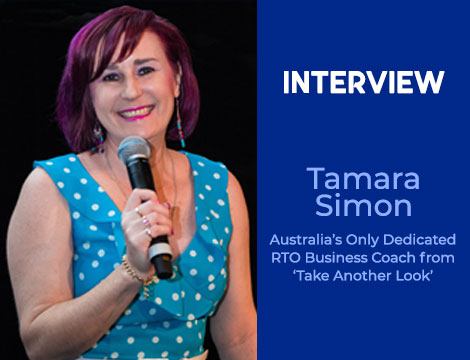It is very important to evaluate the training and auditing systems to find out what is working and what is not. If true monitoring and evaluation is not happening, it will be really difficult to identify gaps in the system.
Irrespective of the type of organisation (public or private), it should be independently audited at-least on an annual basis. The criteria for the evaluation should be focussed on the following main principles:
- Transparency: All audit reports should be made public on ASQA’s website. This will help establish a transparent vocational education and training system.
- Consistency: ASQA should only make decisions within the regulatory framework. There also needs to be a definition of what constitutes a minor non-compliance and what is major. There is a need to adopt a strategic risk management approach and clearly define risks as low, medium and critical.
- Low and medium breaches like minor technical issues within resources, website, trainer documents, industry feedback or operations, should be rectifiable and must not interrupt the operations of the training organisation or the outcomes for the students.
- Major breaches can be constituted as major non-compliance and organisations should be suspended and/or cancelled where there is evidence of financial mismanagement, fraud, or criminal activities.
- Fairness: As a first instance administrative breaches should be rectified by employing a series of non-litigious channels. For example, use an internal appeals mechanism as a step before an AAT application. Engaging an independent party with knowledge of the sector in question; including compulsory co-conferencing.
- Professionalism: The VET regulator must work with the VET Sector not against the VET sector. A single point of contact for all communication enables the RTO to be able to work closely with the regulator to rectify any issues. All minor non-compliances needs to be handled quickly and efficiently ensuring that the RTO is able to continue delivering quality training.
- Adaptability: We need to understand that times have changed and there are many different ways learners access information and learning. There needs to be adaptability and acceptance on the regulators’ behalf to online or distance delivery modes as valid modes of study.
- Equality: TAFE and RTO’s need be treated equally and have the same principles applied to them. There must be consistency in decisions.
- Independence: The system should be based on quality principles only. There cannot be ever changing decisions influenced by the personal or professional interests of the regulatory officers or politics of the day.
- Quality: The focus should be on quality, not just compliance. ASQA and other regulatory bodies must focus on all aspects of the VET system and not only compliance.
- Conflicts of interest: ASQA officers, auditors and other regulatory officers cannot be allowed to also operate in the VET sector in positions where there could be a conflict of interest. Officers working with a government regulatory body cannot run their own VET business, whether as a consultant or as part of an RTO, or be an RTO board member.
- Responsibility: ASQA has a responsibility as a government department. They must develop Regulatory Guidelines that allow RTO’s to understand the processes of an audit without any grey areas in either the directions or audit processes and outcomes.
- Review rights: All RTOs irrespective of when their applications are lodged, must have rectification and reconsideration rights at their own costs.
- Accountability: If a regulatory body and their representatives are not held accountable they will continue to damage Australia and the VET sector. Auditing practices should be reviewed against industry standards.
If any of these principles have not been followed, the integrity and usefulness of the organisation must be questioned.
Some of the main issues in the current regulatory environment, because of not following the above principles, have been identified in this article below:
An auditor-centred audit model not a system-centred
The current regulatory system is becoming more and more ‘auditor-centred’, where the auditors sometimes ‘do not follow’ the regulatory guidelines and framework which they operate under.
66% or more turnover of staff
The total regulator workforce in 2016-17 was 162 staff, with a turnover of 109 staff since 2014/15. This is a 66% turnover. There are rumours that ASQA auditors go out cancelling competitors and then after some time either start their own training organisation or select a high-managerial agent job at a training provider.
A regulatory body that gives very little support or contradictory information
When a regulatory body itself can not identify the effective use of the current regulatory environment, then how can training organisations?
One example from thousands is given below:
From: Sukh Sandhu <sukh.sandhu@careercalling.com.au>
Sent: Monday, 15 April 2019 8:51 AM
To: ASQA – Enquiries <Enquiries@asqa.gov.au>
Subject: Retention requirements for student’s completed units of competency
To Whom It May Concern
We would like to confirm the retention requirements for student’s work. My question is around when the time of retaining the work for six months starts, straight after a unit of competency finishes or from the time the entire qualification finishes and/or the student withdraws or enrollment cancelled from the course?
My understanding has always been that the complete student file (all the units of competency) need to be retained for at least six months but a number of our clients have suggested that ASQA only requires RTOs to retain individual units of competency for six months and not the complete student files.
Please confirm ASQA’s stand on this matter. Thank you.
Reference:
Retention requirements
An RTO is required to securely retain, and be able to produce in full at audit if requested to do so, all completed student assessment items for each student, as per the definition above, for a period of six months from the date on which the judgement of competence for the student was made
Assessment evidence should be therefore retained by the organisation in digital or printed form for a period of not less than 6 months from the date of the decision of competence.
I have highlighted the section in the attached document.
Please also refer to the following link (A Guide to Compliance) from ASQA’s website:
https://www.asqa.gov.au/standards/about-standards-rtos-2015/standard-one/clauses-1.8-1.12
At an ASQA audit, an RTO would only be requested to produce those assessment records they are required to retain. ASQA’s General direction—retention
requirements for completed student assessment items requires that RTOs retain all completed assessment items relating to each unit or module for six months from the date on which the decision on competence for the individual unit or module was made. If you can’t retain the actual item (e.g. construction projects or perishable items), retain evidence, such as photographs, showing that the standard of the item or work completed justifies the assessment outcome. Completed assessment items such as assignments should not be handed back to learners until the six month period has expired.
Kind regards,
And the response was:
Dear Sukh,
Thank you for your email.
ASQA advises that an RTO is required to securely retain, and be able to produce in full at audit if requested to do so, all completed student assessments items for each student in accordance with the below completed student assessments items definition for a period of six months from the date on which the judgement of competence for the student was made.
ASQA defines completed student assessments items – The actual pieces(s) of work completed by a student or evidence of that work, including evidence collected for an RPL process. An Assessor’s completed marking guide, criteria, and observation checklist for each student may be sufficient where it is not possible to retain the student’s actual work. However, the retained evidence must have enough detail to demonstrate the assessor’s judgement of the student’s performance against the standard required.
Please refer to the ASQA fact sheet – General direction – retention requirements for completed student assessment items for further assistance.
Securely retain: To retain records in a manner that safeguards them against unauthorised access, fire, flood, termites or any other pests, and which ensures that copies of records can be produced if the originals are destroyed or inaccessible. Furthermore, ASQA has no specifications of whether documents are to be stored in electronic format or hard copy.
I trust this information assists, and please do not hesitate to contact ASQA should you have any further enquiries.
Kind regards,
The answer was still unclear so I had to send another email:
From: Sukh Sandhu <sukh.sandhu@careercalling.com.au>
Sent: Monday, 15 April 2019 10:09 AM
To: ASQA – Enquiries <Enquiries@asqa.gov.au>
Subject: Re: Retention requirements for student’s completed units of competency [SEC=UNCLASSIFIED]
Thank you for your email, XXXX
My question is that can an RTO archive all the completed items after six months of completion in an individual unit or the time starts after they complete all the units of competency from a qualification? Say a qualification has three units of competency, unit one completed on the first of January, unit two first of March and unit three first of May, so we are asking the question are we able to archive unit 1 on or after the first of July or do we need to wait for the full qualification to be completed for the six months?
Each unit of competency contain a number of assessment items such as projects, role plays, case studies etc., therefore, the guidelines are not very clear regarding when the archival process should begin?
Kind regards,
The answer was:
From: ASQA – Enquiries <Enquiries@asqa.gov.au>
Date: Mon, 15 Apr 2019 at 10:44
Subject: RE: Retention requirements for student’s completed units of competency [SEC=UNCLASSIFIED]
To: Sukh Sandhu <sukh.sandhu@careercalling.com.au>
Cc: ASQA – Enquiries <Enquiries@asqa.gov.au>
Dear Sukh,
Thank you for your email.
ASQA provides general information and guidance to RTOs and the VET sector but cannot provide private rulings and legal interpretations of legislation for specific circumstances or organisations. It is important for training providers to develop their own policies and procedures that meet their specific business needs and for each unique business to demonstrate to ASQA how the standards are being met.
ASQA’s General direction: Retention requirements for completed student assessment items states that an RTO is required to securely retain, and be able to produce in full at audit if requested to do so, all completed student assessment items for each student for a period of six months from the date on which the judgement of competence for the student was made.
Kind regards,
So, what private ruling or legal interpretation for specific circumstances or organisations I was seeking?
Most importantly, what is the answer to the question being asked? “Can an RTO archive all the completed items after six months of completion in an individual unit or the time starts after they complete all the units of competency from a qualification? Say a qualification has three units of competency, unit one completed on the first of January, unit two first of March and unit three first of May, so we are asking the question are we able to archive unit 1 on or after the first of July or do we need to wait for the full qualification to be completed for the six months?”
Significant delays and impractical approach
We would like to see the complete report and data for the following:
- The total number of applications lodged at the VET Regulator
- The timeframe in which applications have been processed
- The number of audits conducted between 2016-2019?
- How many of them received their audit reports on time according to the Australian Skills Quality Authority’s key performance criteria which is within 30 days?
A significant reduction in the number of audit reports provided within ASQAs target time frame of 30 days, across all audit types, from:
- at worst 77.1% of audit reports provided within target during the 2014-15 reporting period; to
- at best 50.9% of audit reports provided within target during the 2016-17 reporting period.
A substantial increase in the frequency and severity of adverse regulatory decisions, with
- of 48 decisions in 2015 (calendar year), the decision to reject renewal or cancel 35 licences;
- of 275 decisions in 2017 (calendar year), the decision to reject renewal or cancel 153 licences;
- of 237 decision in the calendar year 2018 (to July 30 2018), the decision to reject renewal or cancel 197 licences, accounting for 83% of all regulatory decisions;
- 89% of all of the regulators’ decisions to cancel an organisations training licence, since the establishment of the regulator in 2011, have occurred since the implementation of the new standards in 2015.
Question regarding the independence of ASQA’s Governance, Policy and Quality team
Without publishing the details of complaints, an increase in the number of complaints received about and against the regulator from 38 in 2014-15, to 73 in 2016-17; with the regulator internally substantiating 42% of the 127 complaints with an outcome recorded, across the categories of
- Slow processing of applications/ audits (31% of complaints)
- ASQA’s processes for handling complaints about RTOs (9.8% of complaints)
- Auditors competence/ attitude (10.3% of complaints)
- ASQA’s regulatory requirements (8.1% of complaints)
- Poor communication / including infoline issues (9.8% of complaints)
- ASQA’s staff (excluding auditors) (9.8% of complaints)
- ASQA’s fees and charges (2.2% of complaints)
- Other (19% of complaints)
No independent review of The VET Regulator, its performance and its staff
ASQA published on 24 May 2018 that RTOs remain satisfied with ASQA’s audit processes, stating under the title of Transparency of the audit process that “90% of respondents reported their organisation was ‘Very Satisfied’ or ‘Satisfied’ with the fairness and transparency of the audit process”, however:
a. The feedback survey results were for RTO’s who had a site audit between 1 July and 31 December 2017, two quarters before the publication of the results.
b. ASQA identified the survey was “sent to organisations following the end of the relevant quarter in which their site audit was conducted” with organisations given two weeks to complete the survey.
c. ASQA Performance Standards indicate a target that providers will receive their initial audit report within 30 days of the site-visit yet this target was only met, at best 51% of the time during 2016-17
d. ASQA Performance Standards indicate that registration applications, renewal applications, and change of scope applications which trigger an audit, will be finalised within 6 months.
e. The information appears to indicate that providers who had received a site audit and were still waiting for the final audit decision were asked by ASQA to complete audit-feedback surveys, which were unlikely to have been anonymous and which providers may have been concerned may have influenced a final audit decision.
The register of name and shame unfavourably targeting Australian businesses
In February 2014 ASQA updated its policy with regards to the publication of regulatory decisions made, deciding that “It would be fairer practice to defer publication of its regulatory decisions until an RTO’s rights for reconsideration or appeal have been exhausted”. In June 2016 ASQA reverted this policy deciding that “information about decisions will be published shortly after they are made”.
Uncontrollable and ungovernable power of the VET Regulator
On 20 July 2018 ASQA announced that it had received new regulatory powers to seek civil penalties for non-compliances by regulated entities against the Standards for Registered Training Organisations 2015. ASQA indicated that the purpose of these powers were to “effectively support the quality of the VET sector by providing an additional mechanism to protect students for poor quality providers”. These powers allow ASQA to issue infringement notices for breaches of the standards, even in cases where a provider has rectified that breach. With 80% of providers being found non-compliant at first audit and 47% non-compliant after the final audit, this will impose a significant compliance cost and burden on the industry.
Another 27 non-TAFE RTO’s cancelled, registration of 2 non-TAFE RTOs suspended and rejected the renewal of another non-TAFE RTO
Since 1 January 2019, ASQA’s rate of cancellation, suspension and rejection is almost 5 non-TAFE RTOs a week. With this rate of cancellations, suspensions, rejections and conditions applied, how is ASQA improving the reputation of the vocational education and training sector? Are they giving completely contradictory statements as the Chief Commissioner has been quoted saying that the majority of providers are compliant and then cancelling them at such a high rate? What to trust? The words or the actions? One of the most important questions is how secure are other private providers?
An auditing body that does not know the qualifications required for its auditors?
When Senator Doug Cameron asked a question in a senate committee session on 05/06/2018 regarding ASQA’s regulatory workforce and the agreed competency requirements for auditors and accreditation assessors to work for them, the answer was “I don’t recall it off the top of my head”.

This answer was given by a Chief Commissioner who directly accepted over 557 recommendations to shut down Australian businesses.
The performance of the VET Regulator
The performance of the VET Regular is concerning based upon all the performance measures,
The knowledge, professionalism, practices, independence and experience and appointment of a number of auditors and officers is concerning,
The VET Regulator failing to perform its duties as required against the Government’s Regulator Performance Framework and deregulation agenda is concerning,
The severity of regulatory decisions being made by the regulator, the high number of expensive and timely challenges of these decisions, and the limited number of instances where the actions undertaken by the regulator have been upheld in an independent court or tribunal, indicate that these actions are not proportionate to the regulatory risk being managed is concerning,
The findings in relation to complaints indicate that communication by the regulator to regulated entities is not clear, targeted or effective is concerning.
The processes the regulator employs with regards to their surveys to regulated entities, the regulators lack of publishing findings in relation to substantiated complaints, and the changing of policy to publish findings against regulated entities, before those entities have been able to exhaust their review rights, do not indicate that the regulator is being open and transparent in its dealings with regulated entities is concerning.
The regulators’ inability to meet critical time frames in Performance Standards for regulatory activity is substantially impeding on business confidence and the capacity for regulated entities to operate efficiently is concerning.
The regulator not undertaking its functions in a way which has the minimum impact necessary to achieve its regulatory objectives is concerning.
We believe an independent inquiry into the actions and performance of the Australian Skills Quality Authority in meeting its legislated duties as a regulator and as Australian Public Servants is much needed in the current circumstances and VET regulatory environment.







































